Permaculture - Mineral fertilizers (Lesson 8 + contest)
Intro
That is the last lesson about fertilizers. After that, we will continue with the other subjects. I share it totally for free of CC-0 license (which means you can copy my text and share it wherever you want to, without the need to mark me as an author). I hope it will bring you joy. Previous lessons can be read here:
Lesson 1- manure and liquid manure
Lesson 2 - types of manure and when to use it
Lesson 3 - Compost. Basics
Lesson 4 - advanced composting
Lesson 5 - Liquid composts, solutions, infusions, decoctions and extracts
Lesson 6 - Green manure. Plants that contribute to nitrogen fixation
Lesson 7 - Phytosanitary plants and getting minerals from deep soil layers
Mineral fertilizers
Mineral fertilizers, otherwise known as artificial fertilizers, are single-component or multi-component fertilizers that are not of plant or animal origin. There is a misconception that all mineral fertilizers are harmful and should be strictly avoided in permaculture. Of course, the vast majority are not allowed in organic farming, but some of the fertilizers, mainly based on natural ground rocks without chemical treatment, can be used in our gardens.
Selected mineral fertilizers with the greatest use in the garden are described below
CALCIUM
Limestone increases the pH of the soil, improves the water capacity of the soil, has a positive effect on the yield of fruit and vegetables, its taste, and resistance to diseases and pests. When used on pastures, it increases the health of the animals.
Use it as fertilizer only when there is a need, especially needed on too acidic soils
- do not use on soils rich in magnesium
- do not add to composts to neutralize the pH (this will result in serious losses in nitrogen)
- do not mix with manure
- Use only when the soil is too acidic (see table below), every 2-3 years, 3-4 weeks before planting/seed, or in autumn after a harvest. Mix the fertilizer with the soil to a depth of 20 cm.
1.Dolomite (dolomite limestone)
- contains 25-30% calcium oxide and 15-18% magnesium oxide
2.Limestone
- contains 39-53% calcium oxide
3.Marl
- contains 25-95% calcium oxide
4.Lime from coral algae
- loosens the soil due to the increased activity of bacteria
- is used at a dose of 25-30 g / m2
- when compost with lime, use 5 kg per 1 m3
- to protect against fungal diseases, you can dissolve in water and spray the plants
5.Calcite
- a good source of calcium when the magnesium level in the soil is too high to use dolomitic lime
6.Crushed eggshells
- perfect especially for crops with cabbages
- Increase the absorption of other nutrients
Maximum doses of CaO in kg/10m2 in different kinds of soil
| Kind of soil | pH >4,0 Necessary | pH 4,1-4,5 Needed | pH 4,6-5,0 Recommended | pH 5,1-5,5 Limited |
|---|---|---|---|---|
| Heavy | 6,0 | 3,0 | 2,0 | 1,0 |
| Average | 4,5 | 4,5 | 1,7 | 1,0 |
| Light | 3,5 | 2,5 | 1,5 | - |
| Very Light | 3,0 | 2,0 | 1,0 | - |
POTASSIUM
Potatoes, beets, and legumes have a particularly high demand for potassium. Potassium deficiency is the second most common problem of soils, right after too acidic pH. It is characterized by slower plant growth, less abundant yields, grain size reduction, lack of grains on the tops of corn cobs, and greater sensitivity of plants to fungal diseases. Older leaves are yellowish, turn brown and wilt over time.
It is best to use it in the fall. In theory, it is recommended to introduce potassium fertilizers into the deeper layers of the soil (10-20 cm for most of the plants, 5-10 cm for cereals), because they move poorly in the soil and thus increase their bioavailability. However, according to the "no-dig" method which I will describe in future lessons, we should dig the fertilizer only in case of very serious deficits.
It should be remembered that the sources of potassium are not only mineral fertilizer but also manure and compost. The use of mineral fertilizers is therefore very rarely required.
1.Potassium Sulfate
- contains 50% K2O and 18% S
- it is a chloride-free fertilizer;
- especially useful for growing potatoes, tomatoes, cucumbers, strawberries, and berries
- sulfates change the pH of the soil, making it more acidic
- Dissolve 40 g of potassium sulfide in 1l of water and spray for winter against fungal diseases and severe potassium deficiencies. Caution with sulfur-sensitive plants
2.Kainite
- consists of 14% K2O, 5% MgO, 20% Na, 4% S;
- a rare rock used for the production of fertilizers, approved for use on organic farms. Use according to the manufacturer's instructions
3.Carnallite
- consists of 8-10% K2O and 10% MgO.
- a rare rock used for the production of fertilizers, approved for use on organic farms. Use according to the manufacturer's recommendations
4.Wood ash
- consists of 1% - 10% potassium
- use a maximum of 700g per 10m2, be careful not to "burn" the plants
- releases minerals after six months from application
- deters worms
- makes the soil more alkaline, so use with caution on soils with a pH above 6.5
5.Powdered granite
- composed of 3% - 5% potassium
- released for 10 years
- use up to 4 kg per 10 m2.
6.Potassium permanganate
- for the production of natural disinfectants and antifungal liquids: 3 g of potassium permanganate + 10 l of water, use undiluted
PHOSPHORUS
Use only in the case of severe phosphorus deficiencies in plants, when supplementation with other natural fertilizers (compost, manure, etc.) does not bring satisfactory results.
1.Phosphate rocks (phosphates)
- composed of 11.5% - 17.5% phosphorus
- use 2-7 kg per 10 m2
- phosphorus is released very slowly, the fertilization treatment with phosphorus rocks will not have to be repeated for years.
2.Phosphate flour
- composed of 30% P2O5 and 26% -53% CaO
- contains a lot of essential micronutrients for plants
- recommended for fertilizing acidic and neutral soils
- to increase bioavailability from 30% (application directly to the soil) to 80-90%, add it to compost and manure, liquid manure, and slurry.
MAGNESIUM + SULFUR
Use only in the case of serious deficiencies of the mentioned microelements in plants, when supplementation with other natural fertilizers (compost, manure, etc.) does not bring satisfactory results. Magnesium is leached out of the soil fairly quickly, but we enrich the soil with it, with each natural fertilization, so mineral fertilizers in the vast majority of cases are unnecessary.
1.Kieserite
- contains 27% MgO and 22% S.
- Particularly high requirements in terms of sulfur demand are shown by: mustard, legumes, corn, and some vegetables, such as garlic, onion, red beet, leek, cruciferous vegetables
MICROELEMENTS AND OTHERS
1.Basalt flour
- contains 40% SiO, 8% CaO, 8.3% MgO, 1.7% K2O and elements such as manganese, zinc, copper, molybdenum, boron, iron, selenium
- This fertilizer has a positive effect on the structure of both light and heavy soils, creating better living conditions for beneficial soil microorganisms.
- It is also used to treat seeds before sowing, improving their resistance to soil pathogenic microorganisms.
2.Grey soap (potassium soap)
- Dissolve 150-300g of grey soap in 10l of hot water and use undiluted all year round against aphids
- 40g of grey soap and 125 ml of kerosene, mix well in 25l of hot water and use undiluted before setting the fruit against aphids, scales, and spider mites.
- Dissolve 100-300g of grey soap in a little hot water. Add to 10l of water with a tablespoon of salt, a tablespoon of calcium, ½ liter of denatured alcohol and use it against caterpillars in case of severe infection.
3.Water glass (Sodium silicate)
- an aqueous solution of sodium or potassium silicate
- Due to the high alkalinity, all types of water glasses act on the skin, causing burns, avoid contamination of the eyes, swallowing, and inhalation.
- In case of unintentional release into the environment, the "contamination" zone is limited by covering it with sand and neutralizing it with a sulfuric acid solution.
- used as a fungicide (fungicide): dissolve 20 ml in 1 l of water and spray trees and shrubs during the leafless period (autumn, winter)
- used as an ovicide (to destroy eggs, worms): dissolve 50 ml in 1l of water and use in early spring
4.Bentonite
- 50% montmorillonite, 20% illite, 5-10% kaolinite
- binds water well, is good for sandy soils, increases their water-holding capacity
- provides 70 different micronutrients
- when preparing the compost, use 3 kg per 1 m3
5.Alum
Dissolve 40g of alum in 10 liters of boiling water and:
- saturate the anti-snail sawdust with it
- use undiluted against caterpillars and aphids
6.Dairy
- milk/whey, diluted 1: 1 with spray water, against diseases of tomatoes on leaves and fruit
7.Aluminum sulfate
- sulfates change the pH of the soil to be more acidic
- Dissolve 200g of aluminum sulfate in 1l of water, mix in 9l of additional water before use and use against aphids and Greenhouse whitefly
8.Bone meal, blood, feathers, and more
described in the lessons about manure and liquid manure
Contest
The winner of the previous homework contest is @justice009 - congratulations. I have transferred the reward to your account.
Answer in the comment question I will ask you below to get the chance to gain a small reward. The best answer will get 5 STEEM. The contest lasts until the next lesson is published, so approximately 2 days.
- You have 100m2 of heavy soil, 5,2 pH and you are going to plant veggies there, but the soil lack calcium. You want to use Marl 50% calcium oxide. How much of it you will use (write down the maximum recommended dose), when is the best time to do it, and how often you will repeat fertilization?
Thank you for reading,
@papi.mati
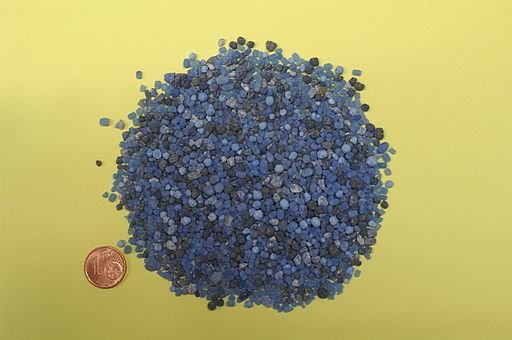
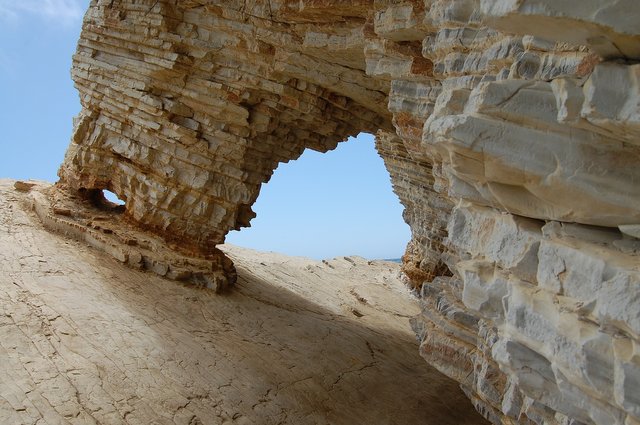
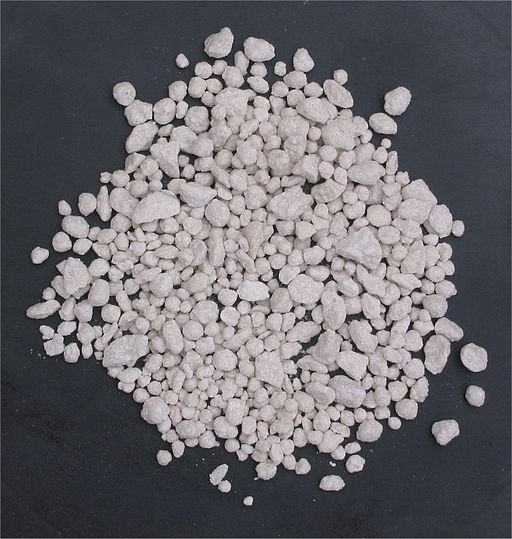
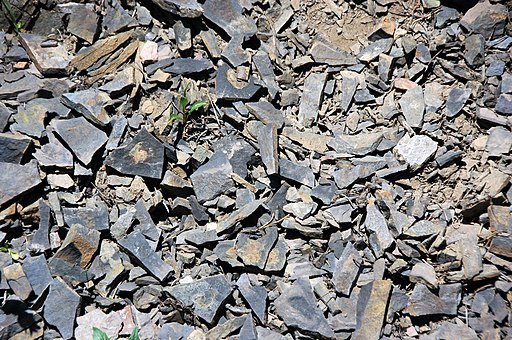
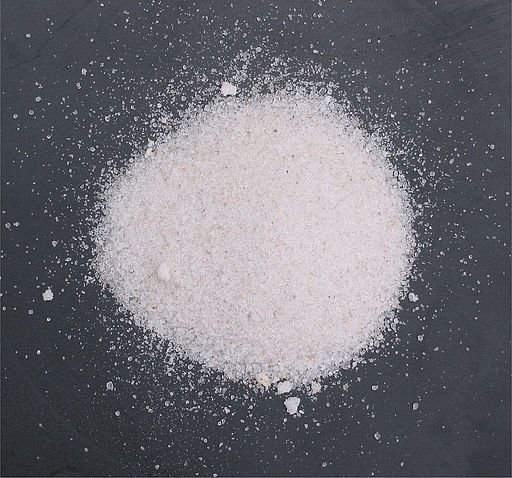
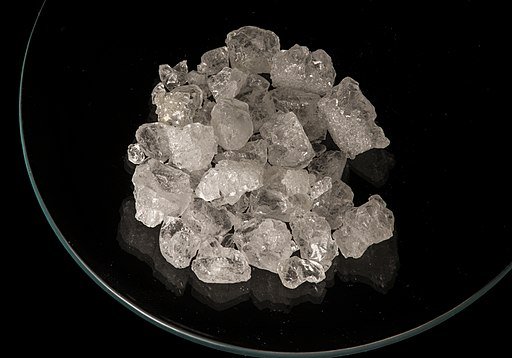
@papi.mati
You will need 10kg/100m2 Calcium Oxide to apply on the soil
The best time to applied the fertilizer is 3 to 4 weeks before planting during falls so the water can help the lime break down by mixing the fertilizer with the soil to a depth of 20cm
Fertilization should be repeat every 2 to 3 years but this decision depends on the soil pH test.
Thank you for participating. How much Marl would it be? 10 kg as well?
You will need 10kg of Marl 50% Calcium Oxide
Unfortunately, it's not true. Marl contains 50% of Calcium Oxide which means the maximum dosage is 20 kg of Marl (the equivalent to 10 kg of pure CaO).
Thank you for participating though, I'm happy to have you here. Hopefully, you will stay in our community for longer - you are very welcomed here.
Thank you very much. I really learnt something today. I’ll definitely try my best in your next contest.
Congrats @justice009
Thanks a lot, you're a great teacher 🙏👍
Hello, am @mukka
How much of it will you use
10kg/100m2 calcium oxide
When is the best time to do it
3-4weeks before planting
How often you will repeat fertilization
You will have to repeat fertilizers like 2-3 years
Thank you for participating. How much Marl would it be? 10 kg as well?
Yes please
The recommended dosage of the marl will also be 10kg/100m2
Unfortunately, it's not true. Marl contains 50% of Calcium Oxide which means the maximum dosage is 20 kg of Marl (the equivalent to 10 kg of pure CaO).
Thank you for participating though, I'm happy to have you here. Hopefully, you will stay in our community for longer - you are very welcomed here.
Hello @papi.mati, great lecture you have here, I've learnt something from it, here's my answer to the questions;
You have 100m2 of heavy soil, 5,2 pH and you are going to plant veggies there, but the soil lack calcium. You want to use Marl 50% calcium oxide. How much of it you will use (write down the maximum recommended dose), when is the best time to do it, and how often you will repeat fertilization?
From the lecture above, the maximum amount of calcium needed for a heavy soil, with a pH of 5.2 is 1.0 kg per 10m2 (1kg/10m2).
For our soil sample, we have 100m2 so that means we'll have to add 10kg of the Marl sp as to boost the soil's calcium levels.
I.e 1kg = 10m2
xkg = 100m2
When we cross multiply, we have
xkg = 100/10
X= 10kg.
The recommended dosage of the Marl is 10kg/100m2.
The best time to apply this fertilizer is about 3-4 weeks before the actual planting of the crops with a soil depth of 20cm and it should be repeated every 2-3 years.
You miss something in your count :) I didn't receive the correct answer yet so I am leaving the contest open
Yeah, thanks for bringing this to my notice,
For a 100m2 piece of land you need 10kg of calcium, that should be 100%.
But from our question, Marl has only 50% calcium, so to make that up to the required dosage, simply multiply the average recommended dosage of calcium for a 100m2 land by 2
(I.e 10kg X 2) this will give 20kg of Marl. This is so as to make up to the requirements of 100%calcium.
Therefore, the required dosage of Marl is 20kg for a 100m2 piece of Land.
Thanks.
That's correct! You've got the reward, congrats.
Thanks a lot, you're the best. 🙏👏😊